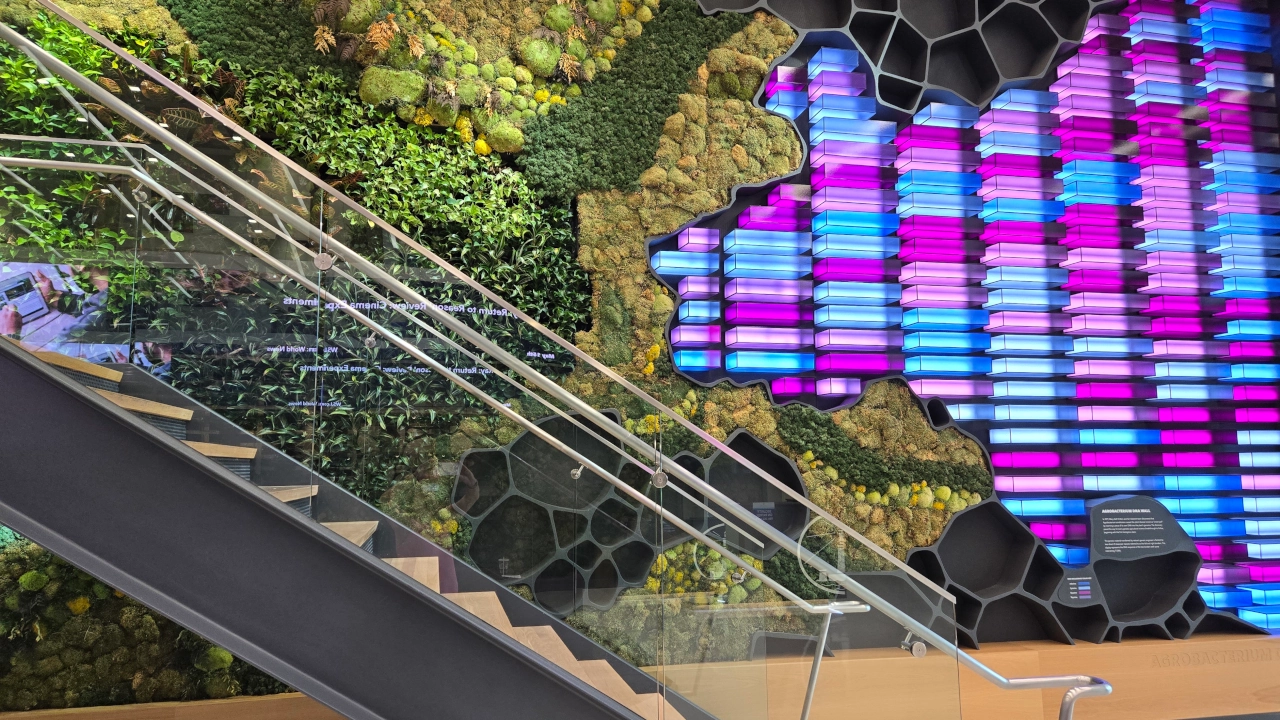Donna Sanders is the script supervisor, field producer and food editor for Where The Food Comes From.
This is her behind-the-scenes look at our day filming with ELO Life in Raleigh, North Carolina.
Sometimes a shoot is so concise and right to the point that it is hard to write a Behind-The-Scenes. I actually started this one three times. The first version gave some fun facts about bananas, but that is covered in the episode. Okay, I do have one: Fun Fact: In 2022 bananas were the number one fruit purchased in the United States.
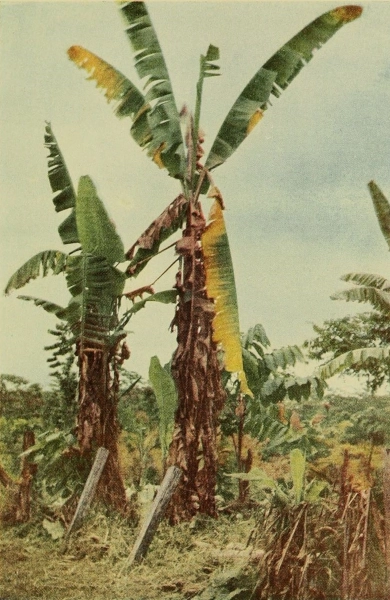
The second version began with Frank Silver’s and Irving Cohn’s song Yes, We Have No Bananas, which debuted in 1923. There was a banana shortage at the fruit stands in New York City – which is actually the premise of the song – but this didn’t feel quite right either.
What the folks back then didn’t know was the banana plantations that grew this variety, the Gros Michel, had soil contaminated by a slow-growing fungus, Fusarium oxysporum f. sp. Cubense, causing Panama disease or Fusarium wilt. Unfortunately, once the fungus is in the plant and soil, nothing can be done. And I do mean nothing.
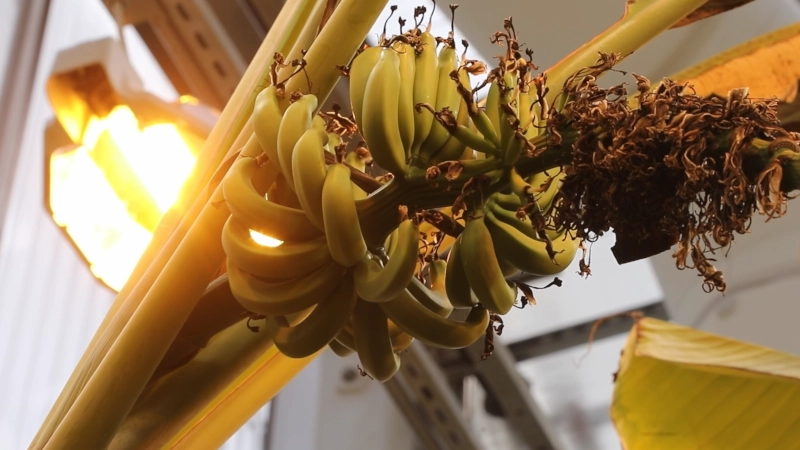
By the late 1950s, the Gros Michel was no longer being exported. But the good news is the banana we eat today, the Cavendish, was able to replace it and, ironically, is grown in the same soil. The Cavendish was resistant to Panama disease — was being the important word there.
The question now: Is the Cavendish here to stay? Unfortunately, the answer is no, and in less than ten years, the banana as we know it will no longer exist. Is anyone doing anything about it? Short answer: Yes.
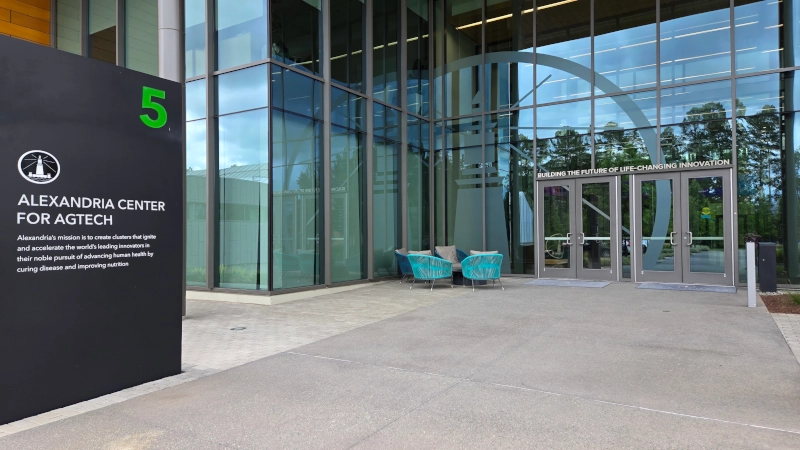
Where The Food Comes From visited ELO Life in Raleigh, NC in May. What is ELO Life? Per CEO Todd Rands, “Fundamentally, ELO is about making nutritious healthy food, making it more affordable, and available to where it is needed the most.” Sounds good right? But here is the best part – they also work at saving crops from extinction.
A GERM LAB – REALLY!
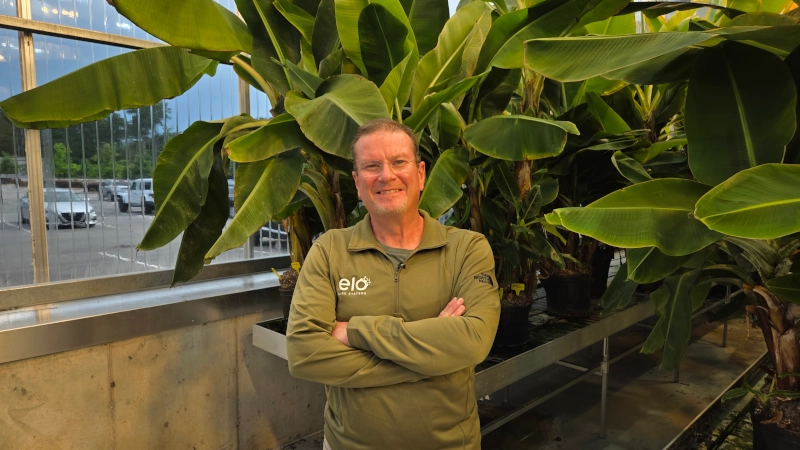
Todd Rands
Our producer and host Chip Carter caught up with Todd outside the germ lab. From the questions Chip asks to Todd’s answers, the whole conversation is extremely technical… but totally understandable. Personally, I find labs fascinating and the brainpower of all the people who work in them totally stimulating, although it can also be very confusing. Which is kind of like working with Chip. We never know where his brain is going to take us, and it always amazes me how he knows and understands what is going on. Secretly, I think that may have surprised Todd as well.
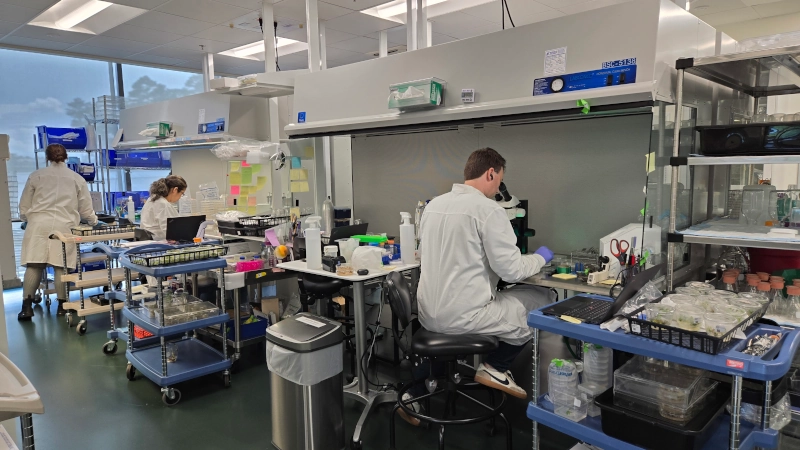
The discussion starts out a bit grim. Turns out the Cavendish banana is being attacked by a cousin of the same virus as the Gros Michel. It is not isolated to a specific region and, like I said, it slowly spreads and there is no defense against the disease. The question then becomes: How do we build a better banana? As Todd put it, the first step is you need to turn to the laboratory to “fast forward nature.” Interesting concept.
Todd explained the process in a very simple manner; however, the actual work is far from it. As Todd said, you need to start with what “nature teaches us,” and the focus always goes back to the family. The scientists turn to the plant’s cousins, aunts, uncles – you get the drift – to determine if any of them have genes that are more resistant to the disease. And if so, the hard part becomes how to isolate and get these genes into a new plant. Kind of hard to picture, but that is exactly what the scientists in the DNA lab do.
WHERE THE MAGIC HAPPENS – THE DNA LAB
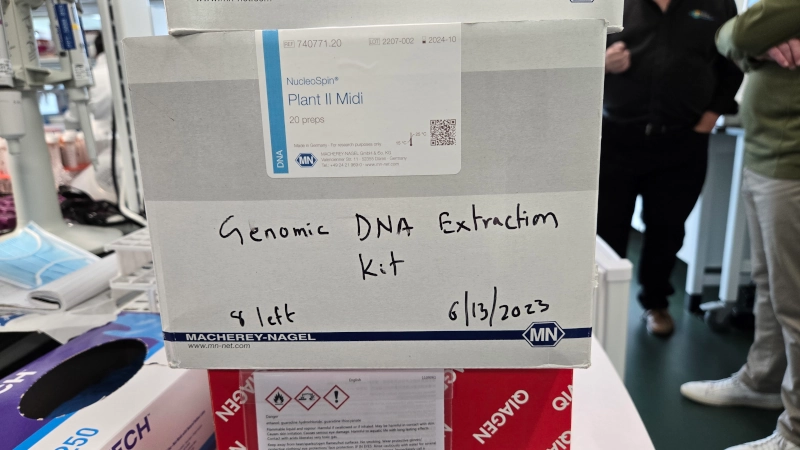
I am not sure I quite understand it all, but banana plants are a bit different in that they have to go back and make a new plant from a single cell, creating an embryo or protoplast — banana plants can’t be simply bred, they have to be cloned. I know, it’s confusing. Todd did an amazing job explaining how new genes are introduced into existing cells to create this new plant via a process called genetic engineering – adding genes from one plant to another to obtain the desired trait and cloning it. Genetic engineering allows very precise changes to be made. It is the same as what our grandfathers did years ago by cross-breeding plants – just a lot quicker because of technology.
You can tell from watching and listening to Todd how passionate he is about the work they are doing. It was absolutely fascinating and I am very grateful you will see it in the episode.
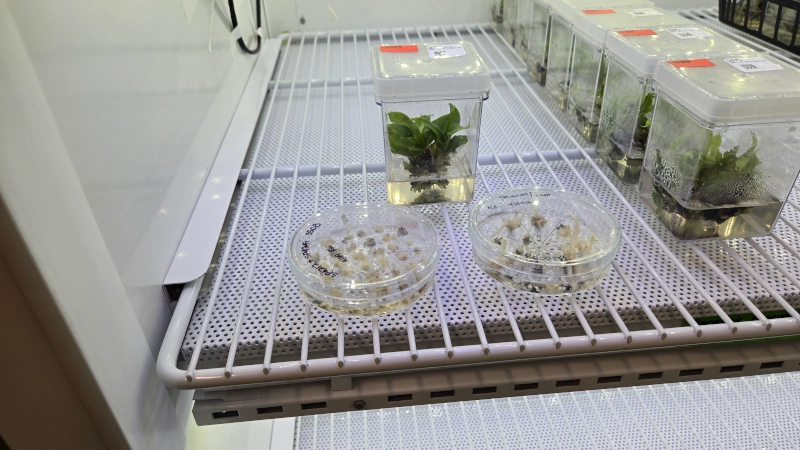
By showing samples in petri dishes, he further explains the four stages of plant growth. He prefaced this with not knowing whether the cameras would show the samples really well or not, but they did, and you will get a good working knowledge about what is happening. Honestly, I would have loved to take home a sample of stage four. It is the actual plant that is ready to go into the soil. Absolutely amazing! Let’s move to the banana tree greenhouse and checkout the final product.
THE GREENHOUSE
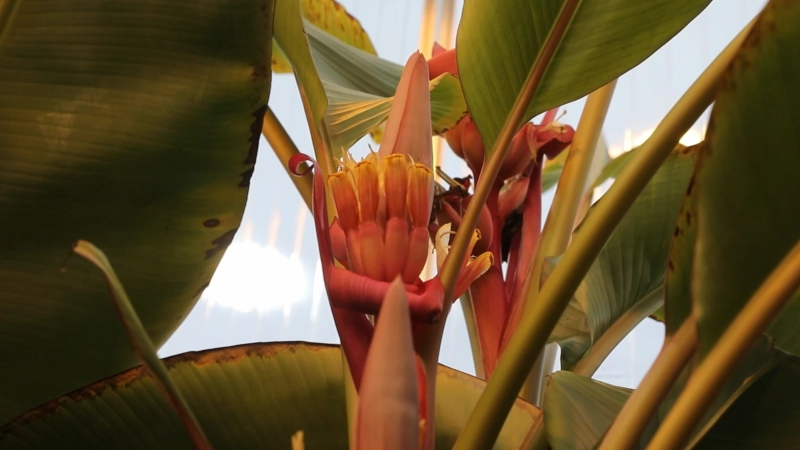
Let’s face it our summers are getting hotter, but the greenhouse brought us into a total tropical climate with extreme heat and humidity – totally oppressive! The banana trees are gorgeous, lush, and large, but are they free from Panama disease? Being disease-free is determined by taking a cross-section of the trunk and examining it for the fungus Fusarium. If the tree passes the test, the plant will go back to the lab, and more will be grown using its DNA.
THANKFULLY SOMEPLACE COOL
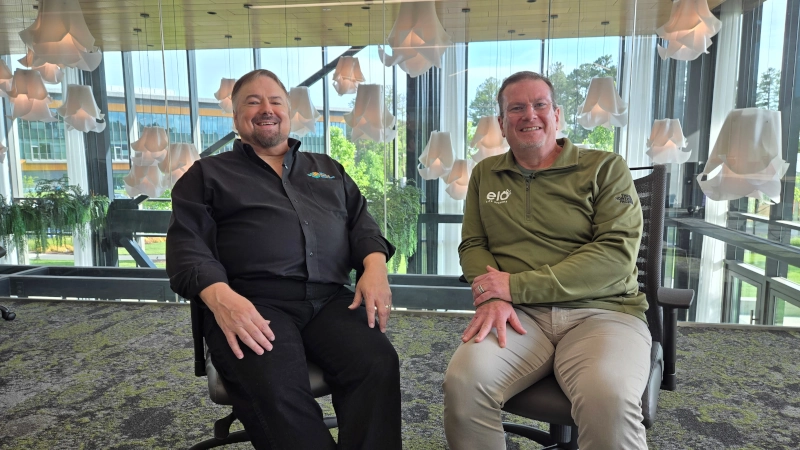
Chip Carter and Todd Rands
We left the oppressive heat and humidity of the greenhouse and moved to the conference room. Todd reinforced that within 10 years is the timeline for Cavendish extinction. Really not that long if you think about how fast time seems to move.
The important takeaway is that ELO Life is being proactive and looking for a solution to ensure we have bananas. Kudos. And we’re all crossing our fingers this works.
Like the Gros Michel and Cavendish, will the same thing happen to this new banana? Only time will tell. But after this show, I am convinced that ELO Life will once again be the knights in white lab coats and save the day.
